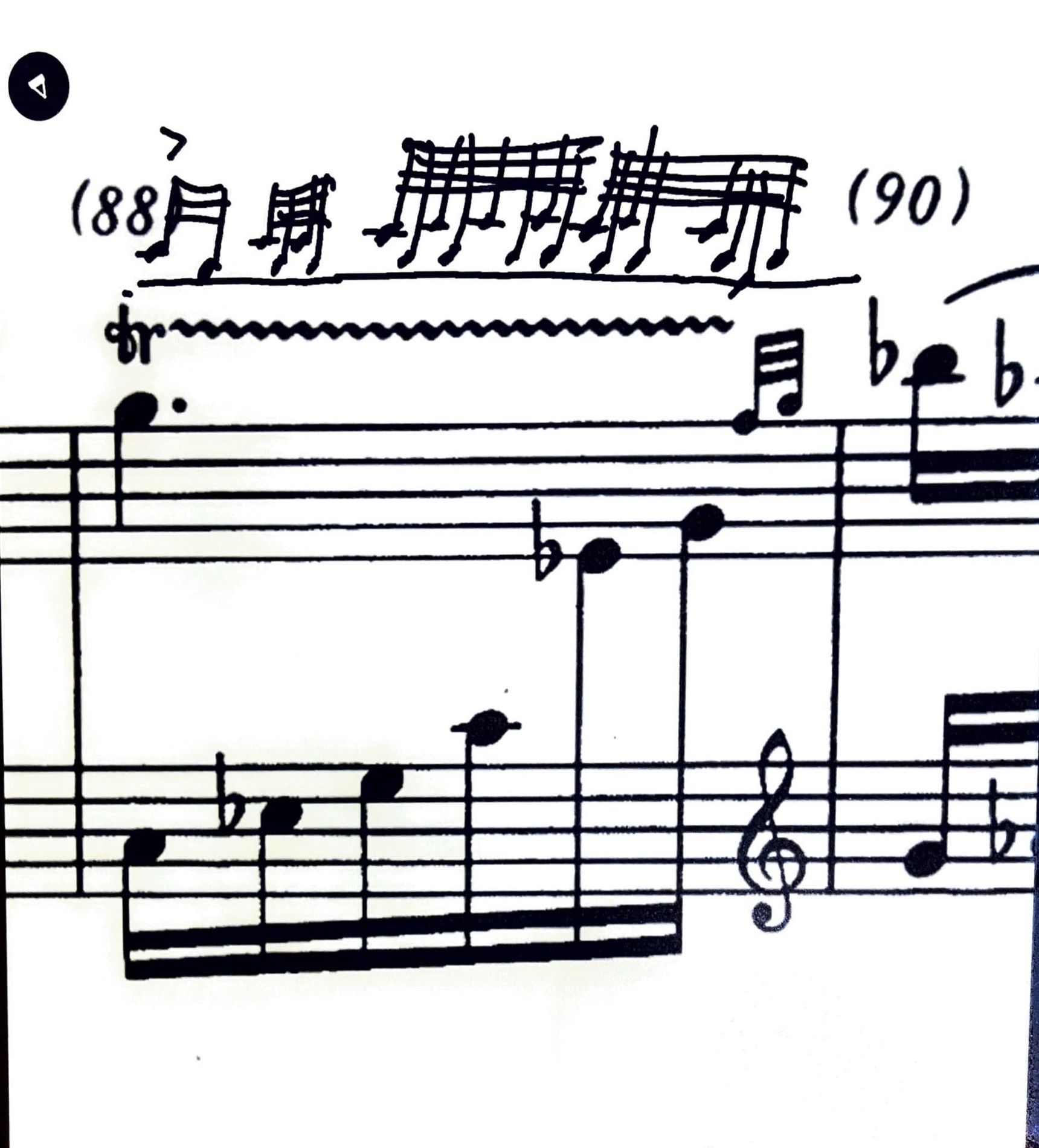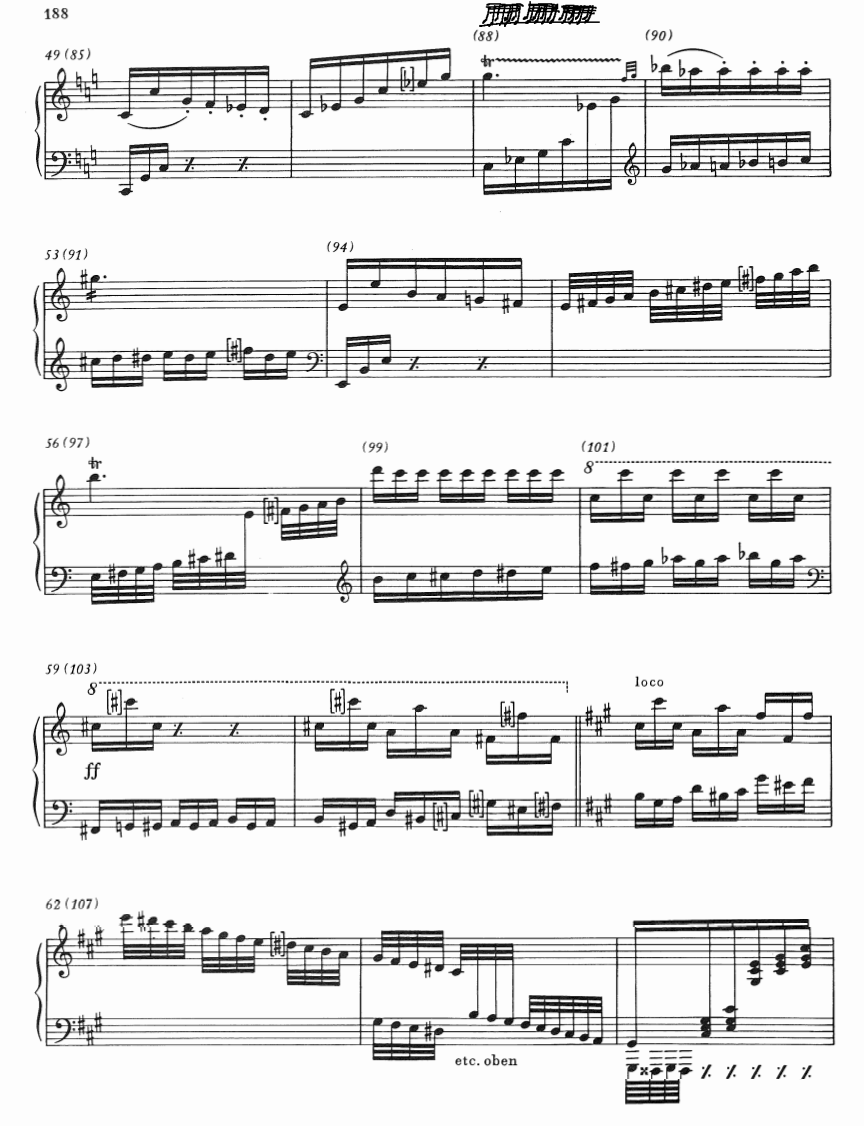Week 1 Assignment
Welcome to the latest two-week intensive with Leann Osterkamp!
Do your trills never sound quite right? Do your fingers refuse to play trills? This two-week intensive will start by giving you some basic academics about correctly deciding which notes you should be playing in each unique trill. We will then discuss how to train your ear and fingers to play consistent elegant trills each and every time, using proven practice techniques that you can incorporate right away, no matter what level of study you are currently at.
Week 1 assignment:
- Pick 1 or 2 trills within your repertoire (or dream repertoire) to analyze
- On blank sheet music paper, write out the entire ornament, including (and paying special attention to) the preparation (vorschlag) and termination (nachschlag) of the trill.
- Either record a video discussing or type out your rationality/decisions behind why you specifically chose the preparatory notes and terminating notes that you chose, as well as why you chose the subdivision tempo for the main part of the trill. For example, "I chose to initiate the attack on the note itself instead of the note above because I wanted to emphasize the main melodic contour and create a more stark delineation of beat. I then chose to do precisely 4 sixteenths per left-hand note because I like how the primary note is then contrapuntally emphasized on each beat and I think it balances the energy with accuracy. I then chose to do the somewhat anticipatory notes at the termination because it more elegantly sets up the next section, which needed a more placed set-up vs. a direct entry, since this was the end of a major structural section of the piece."
- Bonus, record yourself playing the exact written version of your trill.
https://www.youtube.com/watch?v=ovZlaJdMhog
67 replies
-
Hi Leann, thanks for leading this TWI. I’ve chosen the Chopin Nocturne Op. 9 No. 2. It is probably at least two grades, if not more, above my current skill level, but as it is supposedly one of the easiest, it has been on my radar.
The implementation of the trills appears to follow a similar structure as that of the Posthumous Nocturne you discussed. That is, a basic melody is repeated several times with variations becoming more elaborate. In the edition I have (Paderewski), the first trill is simply a 3 note trill, so I examined the second variation, in measure 15. Measure 14 is doing a stepwise up/down/up ascent and then with the b flat in the second half of measure, begins a gradual descent landing on the f in measure 15. This is the trill. Because the phrase has landed (even if briefly), I like emphasizing this with the trill start note on the primary f on beat 1, for an eighth. The second beat gets the trill proper, beginning on the f and alternating with the g above, for 6 64ths, with the trill ending on the f for a 32nd. Having the trill start note, the trill itself and the end note all be on f gives the line a solid grounding from which to ascend again (very briefly), beginning with the small e and f 16ths. These should be played immediately after the b flat 7th, taking some time from the staccato g that follows, as playing the e with the b flat 7th is too discordant.
-
Hi Dr Leann,
I have chosen the Mozart sonata K309 first movement, the short trills on m. 65.
Attached is my written notes. Since this piece is an Allegro Con Spirito, it will be fast and I think a triplet (G-A-G) followed by a F#-G is more achievable. However, it is double G, with the initial preparation and the actual trills starting with G.
In the process of analyzing this, I was wondering if I could do a 4 note trills (A-G-A-G) F#-G to differentiate the initial G before the trills, but it's too many notes to fit into the fast tempo.
I think the primary tune is G-G, then the D-E on the RH. But could it also be an ascending melody, G-A, then D-E ?
Would appreciate your advice. Thanks :)

-
-
@Dr. Leann Osterkamp He
I have included a pdf and I am not sure of the way this transfer of information is working. Thank you for your help. François
-
Here is my explanation and performance of my Trill #1 for Week 1 of the Workshop. The Trill is from the G Major Fugue of the Well Tempered Clavier.
I have separately attached a PDF showing the written-out trill. The trill is circled in Red. 2 others are also circled. I do trills there too, but different ones -- starting on the auxiliary. not shown in the video. Thank you!
-
My trill is from Bach's e minor Invention, BWV 778. It is the trill on the F# in the soprano voice in the second measure, starting on the fourth beat.
It was unsatisfactory to me to start this trill on the upper note (G) because of the G immediately before the trill. This is the default rule, but I find trills that are "supposed" to start on the upper note when that note has just been played sometimes sound awkward. I have an edition with this trill written out that way, but I don't like the sound. It seems to interrupt the descending line of the melody. I like the sound of arrival on the F# so that the descending line is preserved.
I slowed down the repetitions towards the end for two reasons. One, it sounded more lyrical. Two, I cannot always execute all those repetitions, so it is safer.
-
Hello Dr. Leann Osterkamp He, I am sorry for being late to submit the assignment for a week 1! I was under the weather last week.
Here is a trill from a piece I’m working on—2nd movement to Schubert’s D959 sonata in A Major, “fair copy” edition by Barenreiter (this is an experiment). I thought starting on the high note with 32nd notes rather than 64th for the vorschlag, and accenting the first note, might make give a little bit of an appogiatura feel to increase tension.

Full page for context:

I've viewed week 2 and hope to work on the assignment in the next couple days. Thank you for leading this two-week intensive!
-
I'm using this training to help me with the trills found in Chopin's Barcarolle. The single note ones are manageable, but the double-third ones - to me - are the most challenging thing in the entire piece. It was quite challenging to slow everything down enough to be able to figure out how many notes I intended to play in each trill because although each one is "measured" - that is, it's according to the beat, I would normally just let my fingers get on with the task. In the past, the double-thirds were "gutted-out." They never sounded very good and nearly made my right forearm seize up. That can't continue. I'll just have to practice is a slowly as necessary for as long as it takes to get to where I can play them in a relaxed way. As to the number of notes, the ratio seems to be four notes in the trill for every 1/8 note.
Looking forward to your comments and suggestions.


